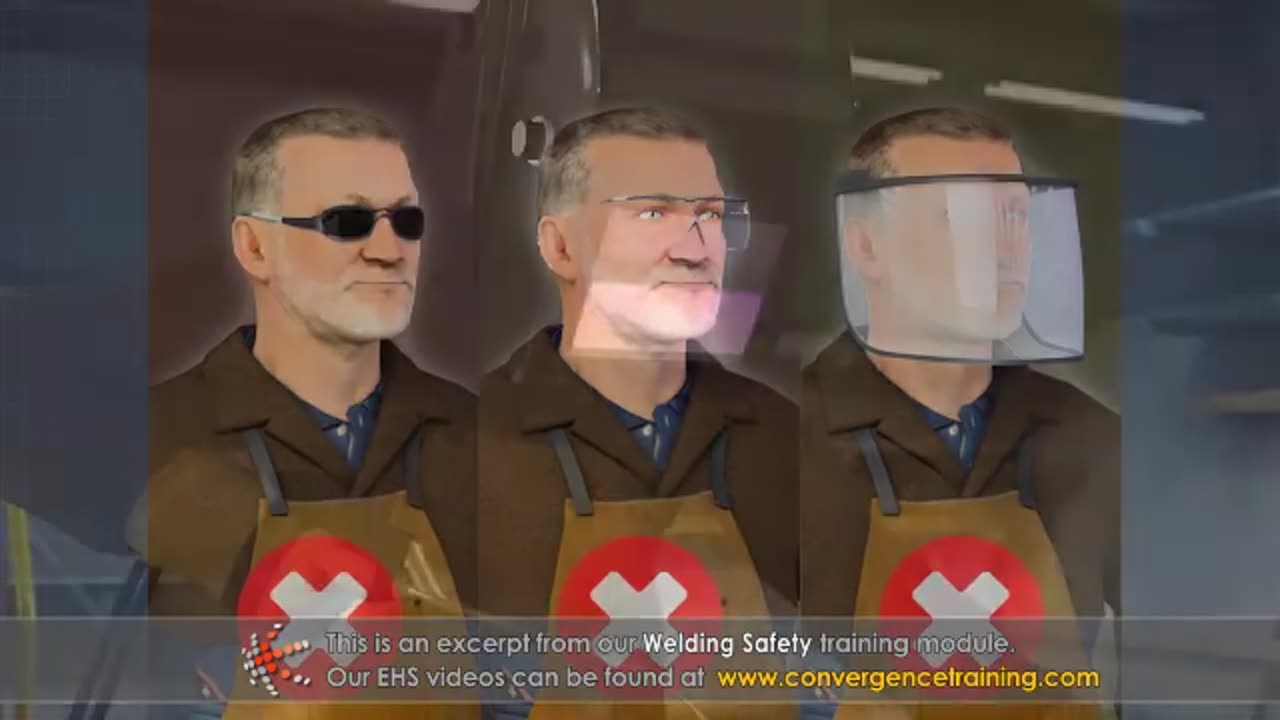Premium Only Content

Welding Safety Training
**Welding Safety Training** is crucial to prevent injuries and ensure safe welding practices. This training covers hazards associated with welding and teaches proper procedures, equipment handling, and emergency response. Below is a detailed guide for a comprehensive welding safety training program.
---
### **1. Objectives of the Training**
- Educate workers on welding hazards and how to mitigate them.
- Teach proper use and maintenance of welding equipment.
- Promote safe work environments for welders and nearby personnel.
- Ensure compliance with safety regulations and standards.
---
### **2. Common Welding Hazards**
- **Electric Shock**: From improperly grounded equipment or touching live parts.
- **Fumes and Gases**: Exposure to toxic substances released during welding.
- **Fire and Explosions**: Sparks and heat can ignite flammable materials.
- **Eye Injuries**: Ultraviolet (UV) and infrared (IR) radiation can cause "arc eye" or burns.
- **Burns**: From molten metal, sparks, or hot equipment.
- **Noise Hazards**: High-decibel noise from welding can damage hearing.
- **Ergonomic Issues**: Repetitive motions or awkward positions can lead to musculoskeletal injuries.
---
### **3. Personal Protective Equipment (PPE)**
- **Mandatory PPE**:
- Welding helmets with appropriate filters (to protect against UV/IR radiation and sparks).
- Safety glasses or goggles (for debris protection).
- Flame-resistant gloves and clothing (long sleeves, leather aprons, and pants).
- Steel-toed boots.
- **Optional PPE**:
- Respirators when working in poorly ventilated areas or when welding hazardous materials.
- Hearing protection in high-noise environments.
---
### **4. Pre-Welding Inspections**
- **Welding Equipment**:
- Inspect cables, electrodes, and clamps for damage or wear.
- Ensure the welding machine is properly grounded.
- **Work Area**:
- Remove flammable materials from the area or shield them properly.
- Check ventilation to prevent fume buildup.
- Ensure fire extinguishers or other fire suppression tools are nearby.
---
### **5. Safe Welding Practices**
#### **a. Equipment Operation**
- Follow the manufacturer’s instructions for operating welding machines.
- Use the correct welding technique for the material and job type.
- Avoid touching electrode holders with bare skin or wet gloves.
#### **b. Fire Prevention**
- Use fire-resistant blankets or shields to protect nearby objects.
- Keep a fire watch for at least 30 minutes after welding is complete in case of delayed ignition.
- Never weld near combustible materials or in environments containing flammable gases or vapors.
#### **c. Ventilation and Fume Control**
- Ensure proper ventilation to reduce exposure to fumes.
- Use local exhaust ventilation (LEV) systems or fume extractors when welding hazardous materials.
- Wear respirators if recommended by a safety officer.
#### **d. Ergonomics and Positioning**
- Use welding tables or adjustable fixtures to avoid awkward postures.
- Take breaks to prevent strain from prolonged periods of work.
- Position materials and tools within easy reach.
---
### **6. Specific Hazards and Mitigation**
#### **a. Arc Welding**
- Protect against arc flash by shielding the welding area.
- Keep bystanders at a safe distance or use welding curtains/screens.
#### **b. Gas Welding**
- Store and handle gas cylinders securely (upright and chained).
- Check for leaks using soapy water; never use open flames.
#### **c. TIG and MIG Welding**
- Adjust shielding gas flow to prevent weld contamination.
- Ensure electrodes and wires are free of contamination before use.
---
### **7. Emergency Preparedness**
- **Burns**:
- Cool burns with clean, cool water (do not use ice).
- Seek medical attention for severe burns.
- **Electric Shock**:
- Disconnect power and provide CPR if necessary.
- Call for emergency assistance immediately.
- **Fire Response**:
- Use the correct type of fire extinguisher for the material (e.g., Class D for metals).
- Evacuate the area if the fire cannot be controlled quickly.
- **Eye Injuries**:
- Flush eyes with clean water for 15 minutes if exposed to sparks or chemicals.
- Seek medical attention for vision problems or burns.
---
### **8. Regulatory Compliance**
- Follow OSHA guidelines for welding and cutting (e.g., 29 CFR 1910.252).
- Ensure compliance with standards set by ANSI and AWS.
- Maintain Material Safety Data Sheets (MSDS) for all welding materials.
---
### **9. Training Delivery Methods**
- **Classroom Training**:
- Use diagrams, videos, and case studies to explain welding hazards and safe practices.
- **Hands-On Training**:
- Practice setting up equipment, operating tools, and responding to emergencies.
- Demonstrate proper PPE use and maintenance.
- **Toolbox Talks**:
- Conduct short, on-site discussions about specific hazards and safety tips.
---
### **10. Follow-Up and Refresher Training**
- Conduct periodic refresher courses, especially after incidents or equipment updates.
- Update training to include new materials, tools, or techniques.
- Regularly audit welding areas to ensure compliance with safety protocols.
---
Would you like additional resources, such as printable checklists, slides, or safety posters, to accompany this training?
-
 6:54
6:54
HSESafetyInformation
1 month ago6 Must Try Breakfast recipes By Food Fusion
341 -
![🔴[LIVE] WE ARE IN SERIOUS TROUBLE (Stock Market Crash) || The MK Show](https://1a-1791.com/video/fww1/c5/s8/1/z/7/z/A/z7zAy.0kob-small-The-MK-Show-Apr.-9th.jpg) LIVE
LIVE
Matt Kohrs
11 hours ago🔴[LIVE] WE ARE IN SERIOUS TROUBLE (Stock Market Crash) || The MK Show
1,713 watching -
 LIVE
LIVE
Dear America
9 hours agoTrump Sends STRONG Message To China + New Details About Trump Would-Be Assassin Weapon Of Choice!
4,048 watching -
 LIVE
LIVE
Wendy Bell Radio
5 hours agoAmerica Is Done Being The World's B*tch
9,236 watching -
 LIVE
LIVE
2 MIKES LIVE
52 minutes agoTHE MIKE SCHWARTZ SHOW with DR. MICHAEL J SCHWARTZ 04-09-2025
294 watching -
 1:27:21
1:27:21
JULIE GREEN MINISTRIES
3 hours agoLIVE WITH JULIE
118K128 -
 1:27:41
1:27:41
Game On!
14 hours ago $9.04 earnedA Tradition Unlike Any Other with Paige Spiranac! Master 2025 Preview!
33.9K3 -
 18:28
18:28
World2Briggs
20 hours ago $7.50 earnedTop 10 Cities That Are Held Together with Duct Tape
29.2K25 -
 17:50
17:50
Degenerate Jay
13 hours ago $6.84 earnedGoodbye Val Kilmer - Batman, Forever
35.1K13 -
 18:16
18:16
IsaacButterfield
1 day ago $3.68 earnedThe Police Were Called!
29.9K8